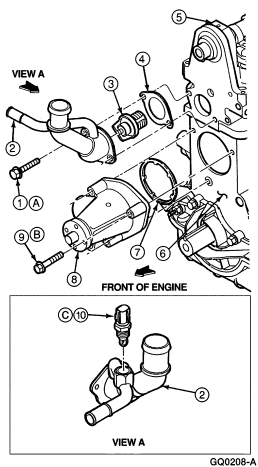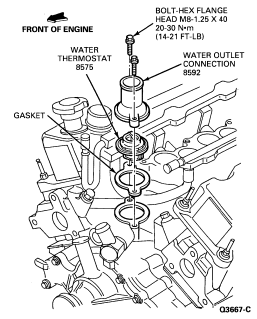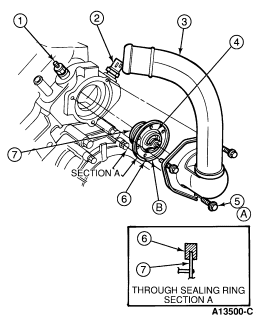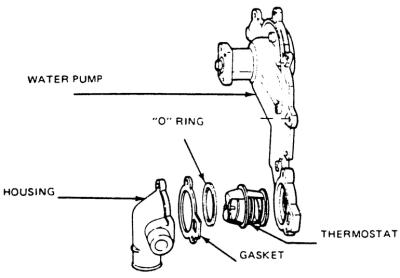1) Drain the radiator/cooling system. There is a small valve at the bottom of the radiator to twist open. It may be difficult to turn. Remove the radiator cap to allow better drainage.
2) Follow the upper radiator hose to the thermostat housing.
3) On 4-cylinders remove the heater return hose from the thermostat housing.
4) Loosen the hose clamp on the radiator hose at the thermostat housing and twist it to loosen it and remove it.
5) If the hose is old and deteriorated, replace it.
6) Remove the bolts and remove the housing cover. If it’s stuck tap it with a soft face hammer or other non-metal object to loosen. Be prepared….some coolant will drain out.
7) Notice how the thermostat is facing while installed (spring side into motor). You may have to rotate it to free it, a long screw driver or pair of pliers may be needed
8) Stuff a rag into the engine opening, then remove all traces of corrosion and gasket material from housing and engine. Remove the rag.
9) On the 4.0 engines, make sure the sealing ring is positioned correctly on the thermostat.
10) Coat the mating surfaces of the housing and engine with an adhesive type of sealer. Install the new thermostat into the housing with the spring side going into the motor. On 2.3 engines, install the thermostat with the bridge (opposite of spring side) inside the elbow connection and turn it clockwise to lock in position with the bridge against the flats cast in to the elbow connection. On 3.0 engines, turn the thermostat clockwise into the housing until the thermostat bridge is perpendicular (At a right angle to) to the mounting holes. On 4.0 engines, make sure the air release valve is in the up position.
11) Install the housing cover and bolts. Torque the bolts to 15-20 FT-LBS.
12) Reattach the hose(s) to the thermostat housing and tighten the hose clamps securely.
13) Refill the cooling system.
14) Start the engine and allow it to reach normal operating temperature. As coolant is ran through the system and air is purged, more coolant may be needed.
15) Check for leaks.

2.3L Engine
2.8L Engine

3.0L Engine

4.0L Engine (2.9L Similar)

